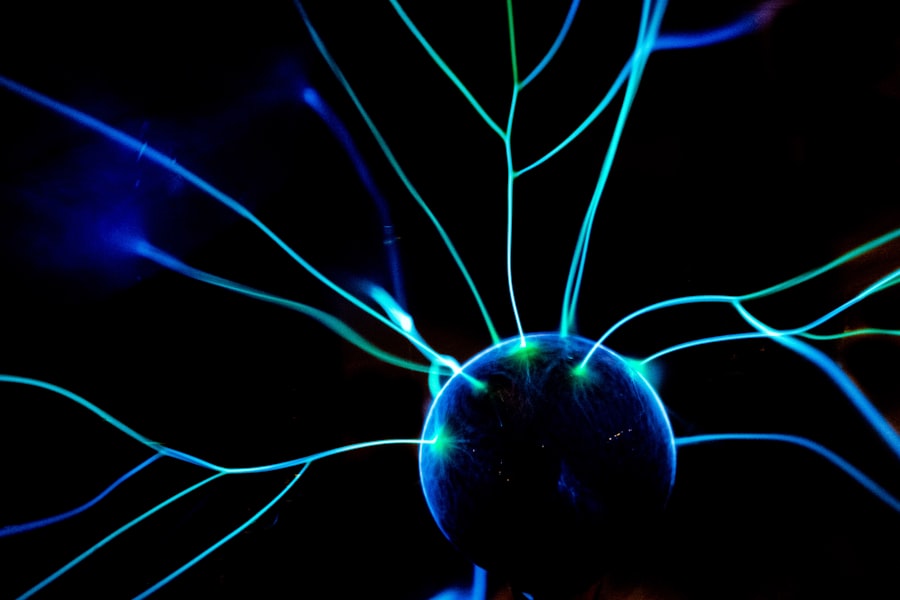Manifestation is a term that has gained significant traction in recent years, often associated with the idea that you can bring your desires into reality through focused thought and intention. At its core, manifestation is about aligning your thoughts, beliefs, and actions with what you want to achieve in life. You may find that the process involves not just wishing for something but actively engaging with the universe to create the conditions necessary for your desires to materialize.
This concept is deeply rooted in various philosophical and spiritual traditions, suggesting that your mindset can influence your reality. As you delve deeper into manifestation, you might realize that it encompasses more than just positive thinking. It requires a holistic approach that includes emotional alignment, belief systems, and actionable steps toward your goals.
The journey of manifestation often begins with self-awareness, where you identify what you truly want and why it matters to you. By understanding your motivations and desires, you can set a clearer intention, which serves as a guiding light on your path to achieving your dreams.
Key Takeaways
- Manifestation is the process of bringing something into reality through focused thoughts and beliefs.
- Neuroscience plays a crucial role in understanding how manifestation works in the brain.
- Belief and manifestation are closely linked, as our beliefs shape our reality.
- Visualization can have a significant impact on the brain, influencing our ability to manifest our desires.
- Emotions play a key role in manifestation, as they can either support or hinder the process.
The Role of Neuroscience in Manifestation
Neuroscience plays a pivotal role in understanding how manifestation works at a biological level. Your brain is a complex organ that processes thoughts, emotions, and experiences, shaping your perception of reality. When you engage in manifestation practices, such as visualization or affirmations, you are essentially training your brain to recognize and prioritize certain thoughts and beliefs.
This process can lead to changes in neural pathways, making it easier for you to adopt a mindset conducive to achieving your goals. Research in neuroscience has shown that the brain is not static; it is capable of change and adaptation. This plasticity means that by consistently focusing on your desires and visualizing their attainment, you can rewire your brain to support those aspirations.
You may find that this scientific perspective on manifestation provides a more grounded understanding of how your thoughts can influence your reality. By leveraging the principles of neuroscience, you can enhance your manifestation practices and create a more profound impact on your life.
The Science of Belief and Manifestation

Belief is a powerful force in the manifestation process. Your beliefs shape your perceptions and influence your actions, ultimately determining the outcomes you experience. When you believe in the possibility of achieving your goals, you are more likely to take the necessary steps to make them a reality.
Conversely, limiting beliefs can hinder your progress and keep you stuck in a cycle of self-doubt and negativity. Understanding the science behind belief can empower you to cultivate a mindset that supports your manifestation efforts. Cognitive psychology offers insights into how beliefs are formed and how they can be changed.
You may find that by challenging negative beliefs and replacing them with positive affirmations, you can shift your mindset toward one that fosters success. This process often involves identifying the root causes of your limiting beliefs and reframing them in a more empowering light. As you work on transforming your beliefs, you’ll likely notice a shift in your energy and motivation, making it easier for you to manifest your desires.
The Impact of Visualization on the Brain
| Metrics | Findings |
|---|---|
| Increased Brain Activity | Visualization stimulates multiple areas of the brain, leading to increased neural activity. |
| Enhanced Memory Retention | Visualizing information helps in better retention and recall of the data. |
| Improved Comprehension | Visual aids help in better understanding and comprehension of complex concepts. |
| Emotional Engagement | Visualizations evoke emotions and create a stronger impact on the brain. |
| Enhanced Problem-Solving | Visualizing problems and solutions can lead to improved problem-solving skills. |
Visualization is a key technique in the manifestation process, allowing you to create a mental image of your desired outcome. This practice has been shown to have significant effects on the brain, activating neural pathways associated with the experiences you wish to create. When you visualize success, your brain responds as if you are actually experiencing it, reinforcing the belief that it is possible for you to achieve those goals.
Engaging in regular visualization exercises can enhance your focus and motivation, making it easier for you to take actionable steps toward your desires. You might find that incorporating vivid imagery into your daily routine helps solidify your intentions and keeps them at the forefront of your mind. As you visualize, consider not only the end result but also the emotions and sensations associated with achieving your goals.
This holistic approach can deepen your connection to your desires and amplify the manifestation process.
The Connection Between Emotions and Manifestation
Emotions play a crucial role in manifestation, acting as a bridge between your thoughts and actions. When you feel positive emotions associated with your desires—such as joy, gratitude, or excitement—you are more likely to attract those experiences into your life.
Understanding this connection can help you cultivate an emotional state that supports your manifestation efforts. To harness the power of emotions in manifestation, consider practices that promote emotional well-being, such as gratitude journaling or mindfulness meditation. By regularly acknowledging what you are grateful for, you can elevate your emotional state and align yourself with the energy of abundance.
Additionally, being aware of any negative emotions that arise during the manifestation process allows you to address them head-on, transforming them into opportunities for growth and healing.
The Role of Neuroplasticity in Manifestation

Neuroplasticity refers to the brain’s ability to reorganize itself by forming new neural connections throughout life. This remarkable capacity means that you have the power to change your thought patterns and behaviors through consistent practice and intention. In the context of manifestation, neuroplasticity allows you to reshape your mindset and align it with your goals.
As you engage in manifestation practices—such as affirmations, visualization, or goal-setting—you are actively participating in this process of rewiring your brain. You may find that over time, positive thoughts become more automatic, making it easier for you to maintain an optimistic outlook. Embracing neuroplasticity empowers you to take control of your mental landscape, creating a fertile ground for your desires to flourish.
The Power of Positive Thinking and Manifestation
Positive thinking is often touted as a cornerstone of successful manifestation. When you maintain an optimistic outlook, you are more likely to attract positive experiences into your life. This principle is supported by research indicating that individuals with a positive mindset tend to be more resilient and open to opportunities.
By cultivating positive thoughts and beliefs, you can create an environment conducive to manifesting your desires. To harness the power of positive thinking effectively, consider incorporating daily affirmations into your routine. These affirmations serve as reminders of your capabilities and potential, reinforcing a mindset that supports success.
Additionally, surrounding yourself with positive influences—whether through uplifting media or supportive relationships—can further enhance your ability to maintain an optimistic perspective.
The Influence of Neurotransmitters on Manifestation
Neurotransmitters are chemical messengers in the brain that play a vital role in regulating mood, motivation, and overall mental well-being. Understanding how these neurotransmitters influence manifestation can provide valuable insights into optimizing your mindset for success. For instance, dopamine—a neurotransmitter associated with pleasure and reward—can enhance motivation when pursuing your goals.
By engaging in activities that boost neurotransmitter levels—such as exercise, healthy eating, or practicing gratitude—you can create a more favorable environment for manifestation. When you feel good emotionally and mentally, you’re more likely to take inspired action toward achieving your desires. Recognizing the connection between neurotransmitters and manifestation empowers you to make choices that support both your mental health and your aspirations.
The Role of the Reticular Activating System in Manifestation
The Reticular Activating System (RAS) is a network of neurons located in the brainstem that plays a crucial role in filtering information and determining what captures your attention. This system helps prioritize stimuli based on what is deemed important or relevant to you. In terms of manifestation, understanding how the RAS functions can significantly enhance your ability to attract what you desire.
When you set clear intentions and focus on specific goals, the RAS becomes attuned to those aspirations, filtering out distractions and highlighting opportunities aligned with them. You may notice that as you become more focused on what you want to manifest, relevant opportunities seem to appear more frequently in your life.
The Impact of Meditation and Mindfulness on Manifestation
Meditation and mindfulness practices have been shown to have profound effects on mental clarity and emotional well-being. These practices allow you to cultivate present-moment awareness while reducing stress and anxiety—factors that can hinder effective manifestation. By incorporating meditation into your daily routine, you create space for reflection and intention-setting.
As you meditate or practice mindfulness, consider focusing on your desires and visualizing their attainment. This practice not only enhances emotional regulation but also strengthens neural pathways associated with positive thinking and belief in yourself. Over time, regular meditation can help solidify a mindset conducive to manifesting your goals while fostering a deeper connection with yourself.
Practical Tips for Harnessing the Power of Manifestation through Neuroscience
To effectively harness the power of manifestation through neuroscience principles, consider implementing practical strategies into your daily routine. Start by setting clear intentions for what you want to manifest; write them down or create vision boards as visual reminders of your goals. Engage in regular visualization exercises where you vividly imagine achieving those desires while tapping into the associated emotions.
Incorporate mindfulness practices into your life by dedicating time each day for meditation or reflection on gratitude. Surround yourself with positive influences—whether through uplifting literature or supportive communities—that reinforce an optimistic mindset. Finally, be patient with yourself; remember that manifestation is often a journey rather than an instant result.
By consistently applying these principles rooted in neuroscience, you’ll be better equipped to manifest the life you’ve always envisioned.
In recent years, the concept of manifestation has gained popularity, often being associated with the power of positive thinking and the law of attraction. However, a deeper understanding of manifestation can be explored through the lens of neuroscience. An article on Unplugged Psych delves into how our brain’s neural pathways can be influenced by our thoughts and intentions, potentially leading to tangible changes in our reality. This perspective suggests that manifestation is not just a mystical process but one that can be explained and enhanced through scientific principles, offering a fascinating intersection between psychology and neuroscience.
FAQs
What is manifestation through neuroscience?
Manifestation through neuroscience is the concept of using principles from neuroscience to manifest or bring about desired outcomes in one’s life. It involves understanding how the brain works and using this knowledge to intentionally create positive changes in one’s thoughts, emotions, and behaviors.
How does neuroscience relate to manifestation?
Neuroscience studies the structure and function of the brain and nervous system. It provides insights into how our thoughts, emotions, and behaviors are influenced by the brain’s activity. By understanding these processes, individuals can use neuroscience principles to manifest their desires and create positive changes in their lives.
What are some techniques for manifestation through neuroscience?
Some techniques for manifestation through neuroscience include visualization, positive affirmations, mindfulness practices, and cognitive restructuring. These techniques are based on the understanding of how the brain processes information and how thoughts and emotions can influence neural pathways and brain activity.
Is there scientific evidence supporting manifestation through neuroscience?
While there is ongoing research in the field of neuroscience and its applications to manifestation, the scientific evidence supporting specific manifestation techniques is still evolving. Some studies have shown the potential for neuroplasticity, the brain’s ability to reorganize and form new neural connections, which supports the idea that intentional mental practices can influence brain function and behavior.
Can anyone use manifestation through neuroscience?
Yes, anyone can learn and apply manifestation techniques based on neuroscience principles. These techniques are often accessible and can be practiced by individuals who are interested in creating positive changes in their lives. However, it’s important to approach these practices with an open mind and a willingness to learn and grow.




